Type 2 Papulopustular Rosacea vs Acne Challenge: Comprehensive Skin Treatment Strategies for Pustules, Papules, and All the Bumpy Cases in Between!
Papulopustular Rosacea vs Acne: A Detailed Guide to Managing Type 2 Rosacea
Ever wonder whether it’s just a pesky pimple or something more, like papulopustular rosacea? It’s a common mix-up that many face. But hey, we’re here to help you sort it out with ease and understanding.
Navigating the world of Papulopustular Rosacea vs Acne can be like a delicate dance, especially when distinguishing between their redness presentations – it’s prevalent in 85% of rosacea patients but only in 33% of those with acne.1
Let’s chat about the different faces of rosacea and how knowing them can be your secret weapon in caring for your skin with the love and knowledge it deserves.
Key Takeaways on Papulopustular Rosacea vs Acne
- Spot the Difference: While both Papulopustular Rosacea vs acne share redness and bumps, the key is in their spread—rosacea embraces more space, and acne spotlights the spots.
- Age Awareness: Acne loves youth, but rosacea? It’s a more mature encounter, typically greeting adults post-30.
- Mind Your Meals: Those inflammatory culprits—think bread, sugar, caffeine—fuel flares in both acne and rosacea. Choose wisely.
- Inner Harmony: Dive deep into the gut-skin and liver-skin synergy to soothe your skin from within, addressing both acne and rosacea at their roots.
- Stress Less: Embrace calm and balance. Managing stress and hormones can be pivotal, especially with autoimmune undertones in play.
- Tiny Mite Alert: Don’t overlook Demodex mites; they could stir up trouble in Type 2 Papulopustular Rosacea.
There are four types of rosacea:
 Type 1: Erythematotelangiectatic Rosacea
Type 1: Erythematotelangiectatic Rosacea
This type features persistent erythema and visible blood vessels due to dilatation, often triggering a strong response in the skin. Flare-ups can worsen without management, leading to permanent redness.
 Type 2: Papulopustular Rosacea
Type 2: Papulopustular Rosacea
This type is often confused with acne and is characterized by red, swollen bumps and pus-filled lesions. Triggers like dairy and citrus can exacerbate this type, and treatments like adapalene may be used.
 Type 3: Phymatous Rosacea
Type 3: Phymatous Rosacea
Causes skin thickening and bumpy texture, notably on the nose, leading to granulomatous changes. It’s more common in men and can sometimes be addressed with light-based therapies for symptom management, but this can make things worse- so always discuss it with your doctor.
 Type 4: Ocular Rosacea
Type 4: Ocular Rosacea
Affects the eyes, causing them to appear bloodshot or watery, and might lead to a sensation of burning or irritation. Ocular symptoms necessitate careful evaluation and could benefit from imaging to guide treatment.
Understanding these nuances is key, and that’s exactly what we’re here to explore. Whether you’re dealing with the redness, pustules, or papules of rosacea, we’ve got you covered with effective strategies to embrace your skin’s true radiance.
Papulopustular Rosacea vs Acne: How to Tell them Apart!
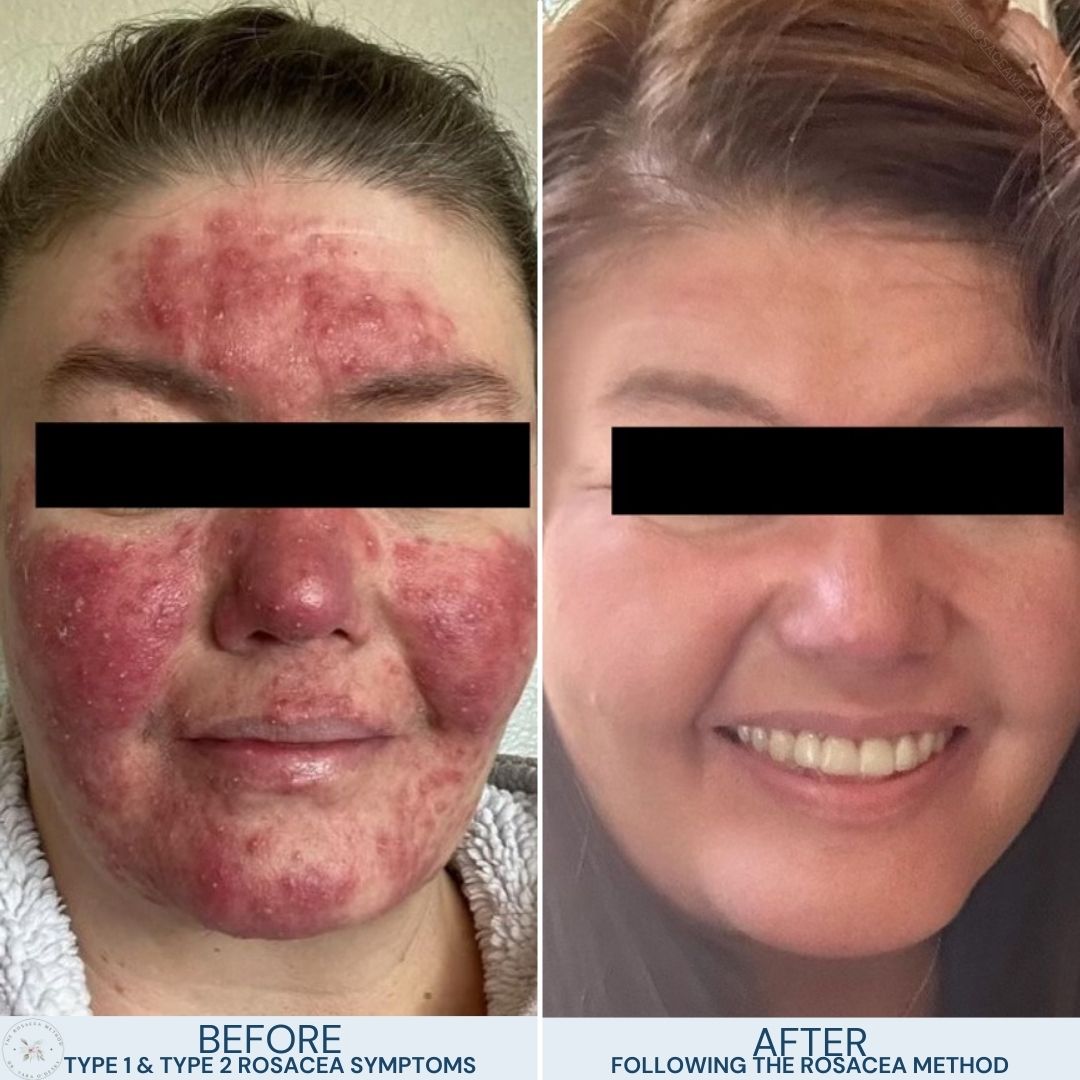
Decoding your skin’s signals can be puzzling. If you’re seeing widespread redness, it’s likely Papulopustular Rosacea, while pointed pimples might point to acne.
Not seeing blackheads? You might be looking at rosacea. Medical professionals recommend looking out for comedones (blackheads and whiteheads) since those are primarily found in Acne. 2
Plus, timing’s a tell-tale: acne often begins in the teens, whereas rosacea generally shows up after 30. (Although the trend is that people younger and younger are now being diagnosed with rosacea.)
Always check in with a dermatologist to get the right diagnosis. If you’re curious about Papulopustular Rosacea Subtype 2 and more, keep reading for more insights!
Papulopustular Rosacea vs Acne Vulgaris: Understanding the Differences
Papulopustular Rosacea vs Acne Vulgaris both may cause those frustrating acne-like breakouts, but they have distinct differences that are essential for accurate diagnosis and treatment.
So, we’re going to break it down and make it super simple to understand, helping you get to the heart of what your skin needs for that glow-up!
When deciding whether you have Papulopustular Rosacea or Acne Vulgaris, a dermatologist’s expertise is vital. While conventional treatments might ease symptoms, uncovering and addressing the root cause is crucial for long-term relief.
Consider consulting a specialist in functional medicine or naturopathy for comprehensive skin wellness when you heal from the inside out.
Flare-up Differences Between Type 2 Papulopustular Rosacea vs Acne
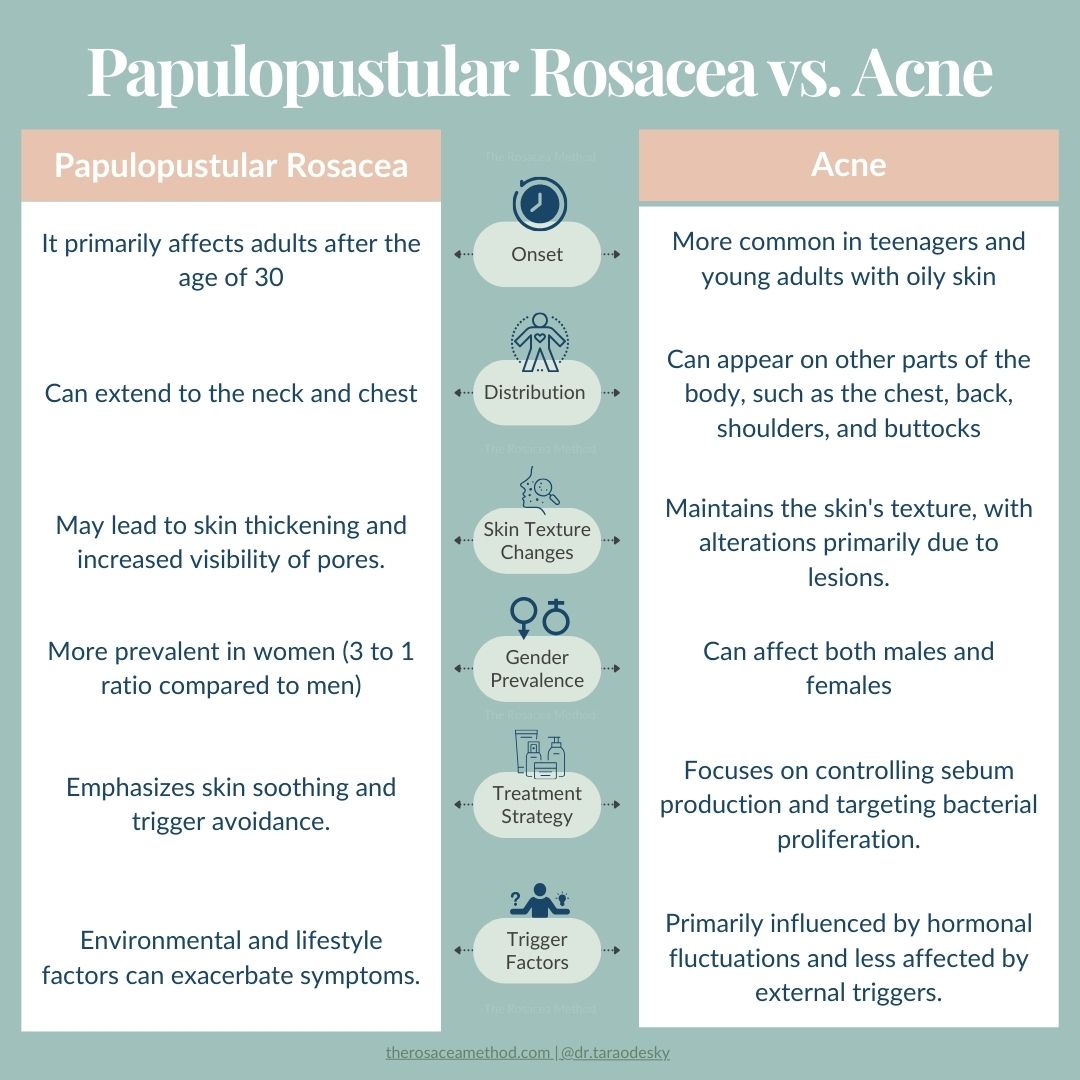
Flare-ups from Type 2 Papulopustular Rosacea, which can occur in young adults, middle-aged, and older patients, might bring redness and pustules, sometimes paired with eyelid irritation—hello, blepharitis. 3
They can leave your skin feeling a tad hot and dry, a stark contrast to acne’s classic blackheads, oily-prone skin, and inflamed spots.
While both can lead to red, swollen bumps, inflammatory acne, found in 85% of adolescents, typically brings cysts into the picture, unlike rosacea’s more uniform flare. 4
Don’t let these flare-ups dampen your sparkle. Understanding their telltale signs empowers you to choose treatments that consider your skin’s unique needs and occasional adverse events.
Keep exploring and fine-tuning your care routine; clear, serene skin is on the horizon.
Diagnosis & Treatment Approaches for Papulopustular Rosacea vs Acne
Stepping into the world of skincare, especially when discerning Papulopustular Rosacea vs Acne, demands an informed approach that takes into account diagnosis, individualized treatments, and the savvy to sidestep antibiotic resistance.
That’s where the nuanced art of dermatology comes into play, promising a journey toward your best skin.
Diagnosing these skin concerns hinges on the details:
- Papulopustular Rosacea typically unfurls across more of the face.
- Acne tends to zero in on specific spots and may venture beyond the face, touching other body parts like shoulders, back, and chest.
Trust your dermatologist to pinpoint your condition with precision.
Treatment-wise:
- Acne invites an array of options, from over-the-counter creams to prescriptions and changes in diet.
- Papulopustular Rosacea often requires a bespoke blend of treatments, balancing topical applications, dietary and lifestyle shifts, and emotional support.
And for those looking to turn the page on their rosacea, a whole-body approach focusing on gut health and stress management is showing promising signs of not just managing but transforming this condition.
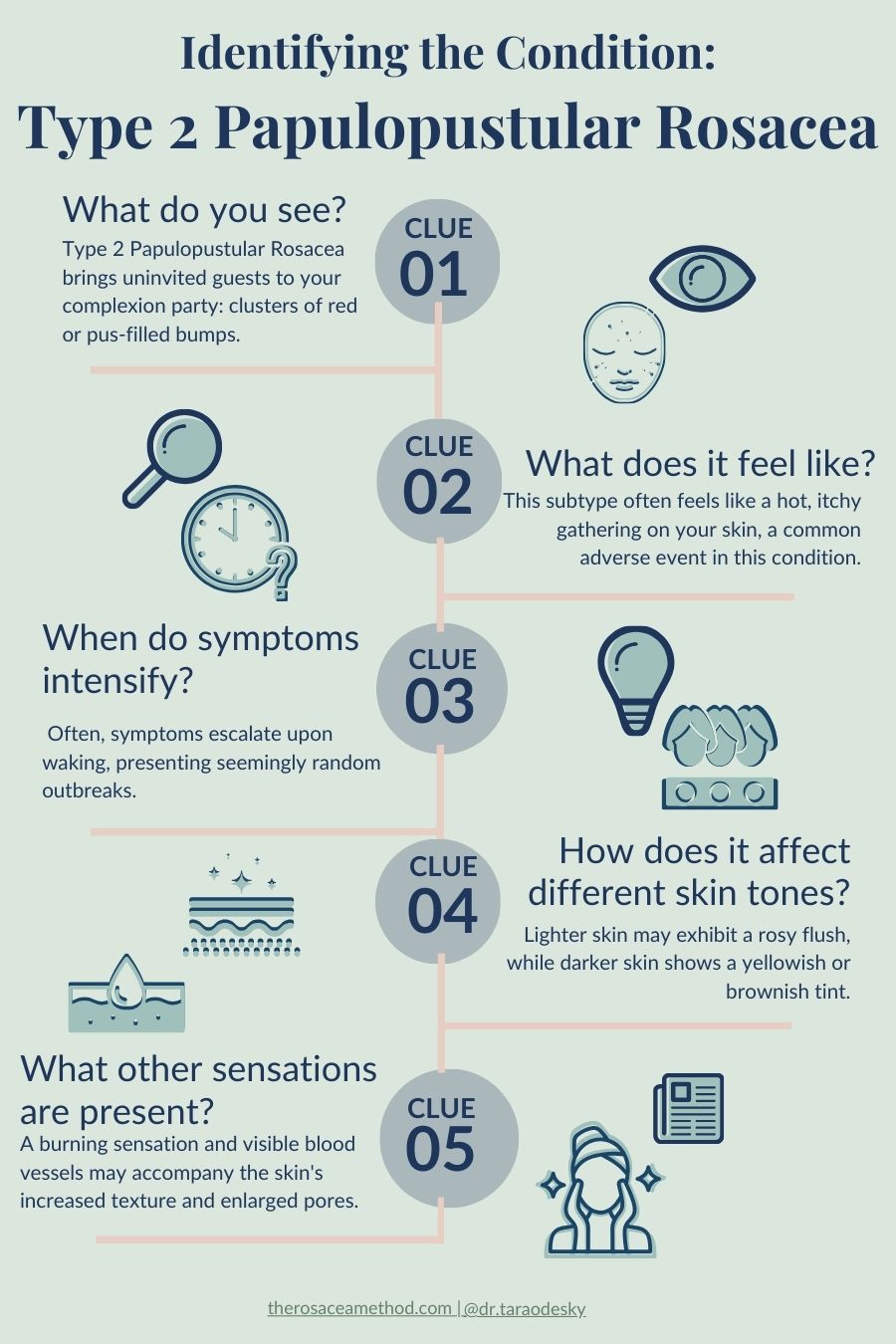
Identifying the Condition: Type 2 Papulopustular Rosacea
- Type 2 Papulopustular Rosacea brings uninvited guests to your complexion party: clusters of red or pus-filled bumps and often tiny pinhead whiteheads on the cheeks.
- This subtype often feels like a hot, itchy area on your skin, a common adverse event in this condition.
- Symptoms might escalate right after you wake up, with outbreaks feeling quite unpredictable.
- Skin tone can influence the visible effects: lighter tones may show a rosy flush, darker tones, and a yellowish or brownish tint.
- Beyond bumps, you might feel a burning sensation and see visible blood vessels on your cheeks. Your skin may feel thicker in some areas, and your pores may be more prominent.
Suspecting Type 2 Papulopustular Rosacea? A dermatologist’s insight is essential for accurate diagnosis and to discuss your unique skin journey.
Recognizing Common Symptoms of Type 2 Papulopustular Rosacea
- Visual: Type 2 Papulopustular Rosacea may present as red or pus-filled bumps across your face, not confined to one area.
- Sensation: You might experience a burning and stinging discomfort, indicating a need for gentle skincare.
- Flushing and Visibility:
- Warmth Across Cheeks
- Visible Blood Vessels
- Skin Texture Changes: If your skin feels thicker and pores appear more prominent, it might signal Type 2 Papulopustular Rosacea.
- Evolution of the Condition: Your skin’s journey with rosacea can shift from milder forms like Type 1 ETR to more advanced stages like Type 2.
- Navigating Skin Care: Always opt for gentle, basic skincare without harmful chemicals, colors, or fragrances while managing your unique skin landscape when considering Papulopustular Rosacea vs acne.
Natural Treatment Methods for Type 2 Papulopustular Rosacea
So you’ve identified Type 2 Papulopustular Rosacea symptoms, have seen your dermatologist, and are ready to tackle it head-on. Let’s explore natural treatment options to help you conquer those red bumps and reclaim your clear, vibrant skin.
Five natural steps that can help soothe your skin
- Dive into Diet: Begin by exploring potential food sensitivities that might be flaring up your skin. An elimination rosacea diet could be your roadmap to calming those red badges of flare-ups. Remember, you’re the detective here, and a functional medicine expert can be your insightful sidekick.
- Stress Less: Since stress and rosacea often go hand-in-hand, finding your zen could mean less red. Yoga or meditation might just be your secret weapon against those pesky flare-ups.
- Gut Check: Got gut troubles like IBS or bloating? There’s a strong chance your gut’s sending an S.O.S. Tuning into your gut health could be key to easing your skin’s distress. A specialist’s guidance could lead to gut—and skinharmony.
- Mite Might: Tiny critters called demodex mites might be more than just skin deep. If you’re especially mite-sensitive, natural remedies could be your gentle giants in the fight against those characteristic red invasions.
- Aloe and Honey to the Rescue: Nature’s soothers, aloe vera, and raw honey, aren’t just sweet relief; they’re cool, calm collectives in a bottle. Dab on that aloe or honey to take down the heat and embrace anti-bacterial bliss.
Ready to wave goodbye to Papulopustular Rosacea vs acne battles? Let’s turn the tide with nature’s best, because your skin deserves peace.
Managing Type 2 Papulopustular Rosacea Flare-Ups: Tips and Recommendations
✅ Holistic Tip #1: Understand Your Rosacea Triggers
- Avoid known irritants like extreme weather, overly spicy foods, and alcohol.5
- Embrace beneficial activities you love with caution, such as moderate exercise and safe sun exposure.
✅ Holistic Tip #2: Simplify Your Skincare
- Adopt a minimalist skincare routine focused on a gentle cleanser and a soothing moisturizer.
- Say goodbye to harsh exfoliants, masks, and scrubs. Less is more!
✅ Holistic Tip #3: Choose the Right Ingredients
- Be diligent about product labels. Opt for clean, third-party-tested ingredients.
- Avoid common irritants like fragrances, dyes/colors, parabens, and Vitamin C.
✅ Holistic Tip #4: Explore Natural Mite Management
- Consider natural treatment strategies if dealing with demodex mites, but always consult your healthcare provider first.
✅ Holistic Tip #5: Purify Your Home
- Switch to clean laundry brands without chemicals, dyes, or perfumes.
- No plug-ins! Artificial fragrance is problematic for almost everyone with rosacea!
The Role of Demodex Mites in Type 2 Papulopustular Rosacea
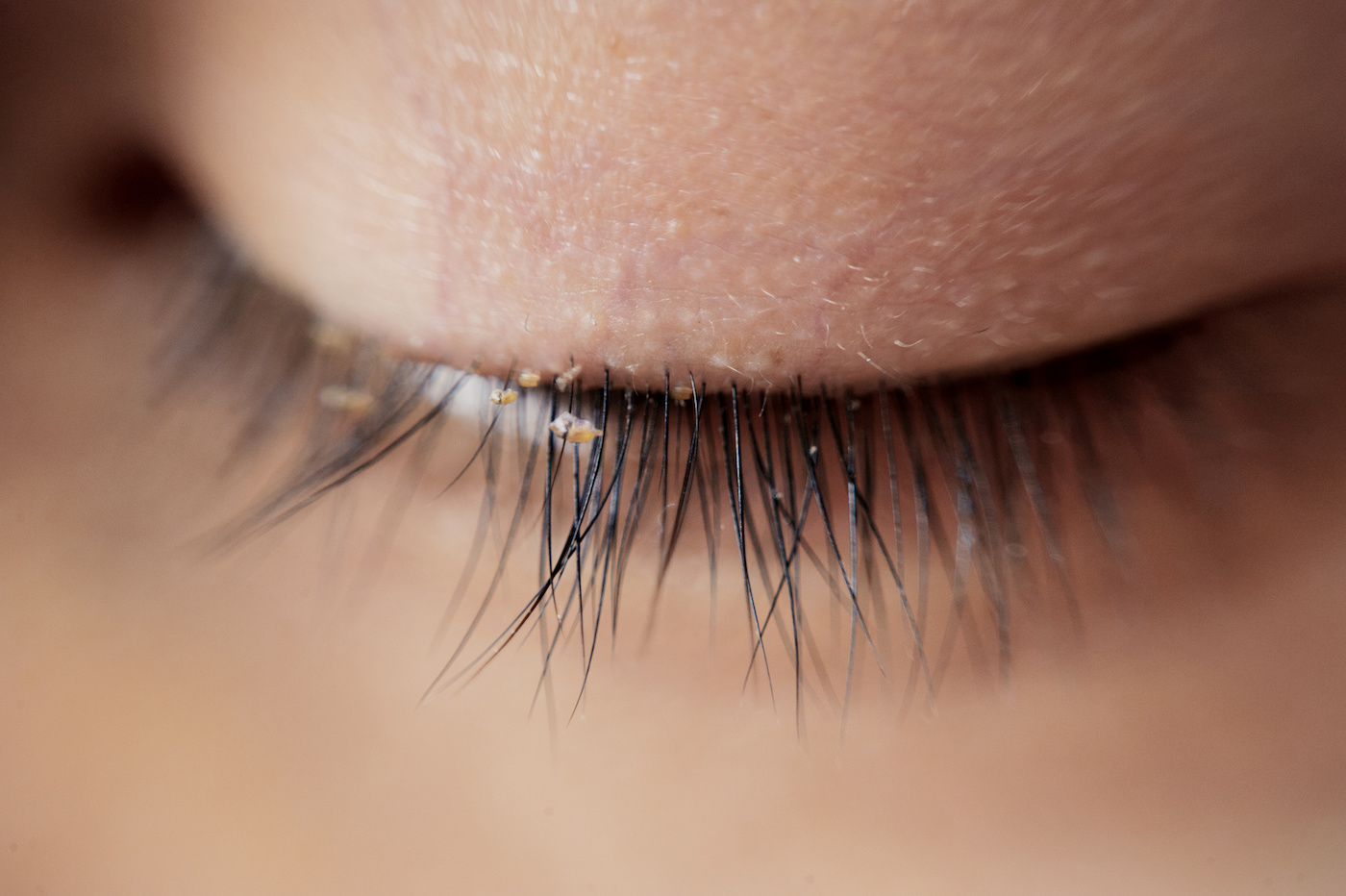
Demodex mites, the tiny inhabitants of ALL human skin, can exacerbate conditions like Acne and Type 2 Papulopustular Rosacea. (These are traditional “dust mites,” and if you’re allergic, it will show up on your face!)
Studies suggest that managing these mites might alleviate symptoms like papules, pustules, and breakouts. A 2018 trial highlighted ivermectin’s effectiveness over traditional treatments such as metronidazole and azelaic acid, pointing to mites as potential culprits. 6
Yet, it’s not a one-and-done deal; stopping treatment will almost always bring symptoms back. Interestingly, reducing body-wide inflammation might minimize these mites’ impact, offering a new perspective on managing skin health.
Stay tuned for more insights on balancing our skin’s microbiome for a clearer complexion.
Treating Acne Flare-Ups
Now that you know which condition you’re dealing with, let’s discuss some options for those suffering from acne. We will break down your game plan with some tried-and-true remedies!
(Note: these are NOT helpful for rosacea and can often make symptoms worse. Always discuss your treatment with your doctor!)
- Benzoyl Peroxide: Your first line of defense against acute acne, benzoyl peroxide targets bacteria, diminishes inflammation, and tackles redness, offering quick relief from breakouts.
- Retinoids: These powerful agents do more than just combat acne; they enhance skin texture, reduce inflammation, and help in unclogging pores, offering a comprehensive solution to your skin woes.
- AHAs and BHAs: Perfect for exfoliation, AHAs work on the skin’s surface, while BHAs target deeper issues. They’re excellent for addressing acne at multiple levels, improving skin texture, and aiding in scar reduction.
- Natural Solutions: Embrace a holistic path with lifestyle and diet tweaks. Consider natural topicals like probiotic sprays to balance your skin’s microbiome, tea tree oil for its antimicrobial properties, green tea extract to soothe and regulate oil production, and witch hazel for its pore-tightening effects.
Understanding Acne Vulgaris and its Impact on the Skin
Acne vulgaris can be a major skin concern for many, leading to discomfort and a lack of confidence. Traditional topical therapy focuses on medications, creams or gels containing active ingredients like benzoyl peroxide or retinoids, you can tackle this issue head-on.
These treatments may help soothe inflammation, clear pores, and combat bacteria, aiming to not only clear up existing blemishes but also prevent scars and hyperpigmentation.
However, these traditional treatments do not address the underlying cause of acne. Remember, patience and consistent care are key in managing acne effectively.
Effective Natural Treatments for Acne Flare-Ups
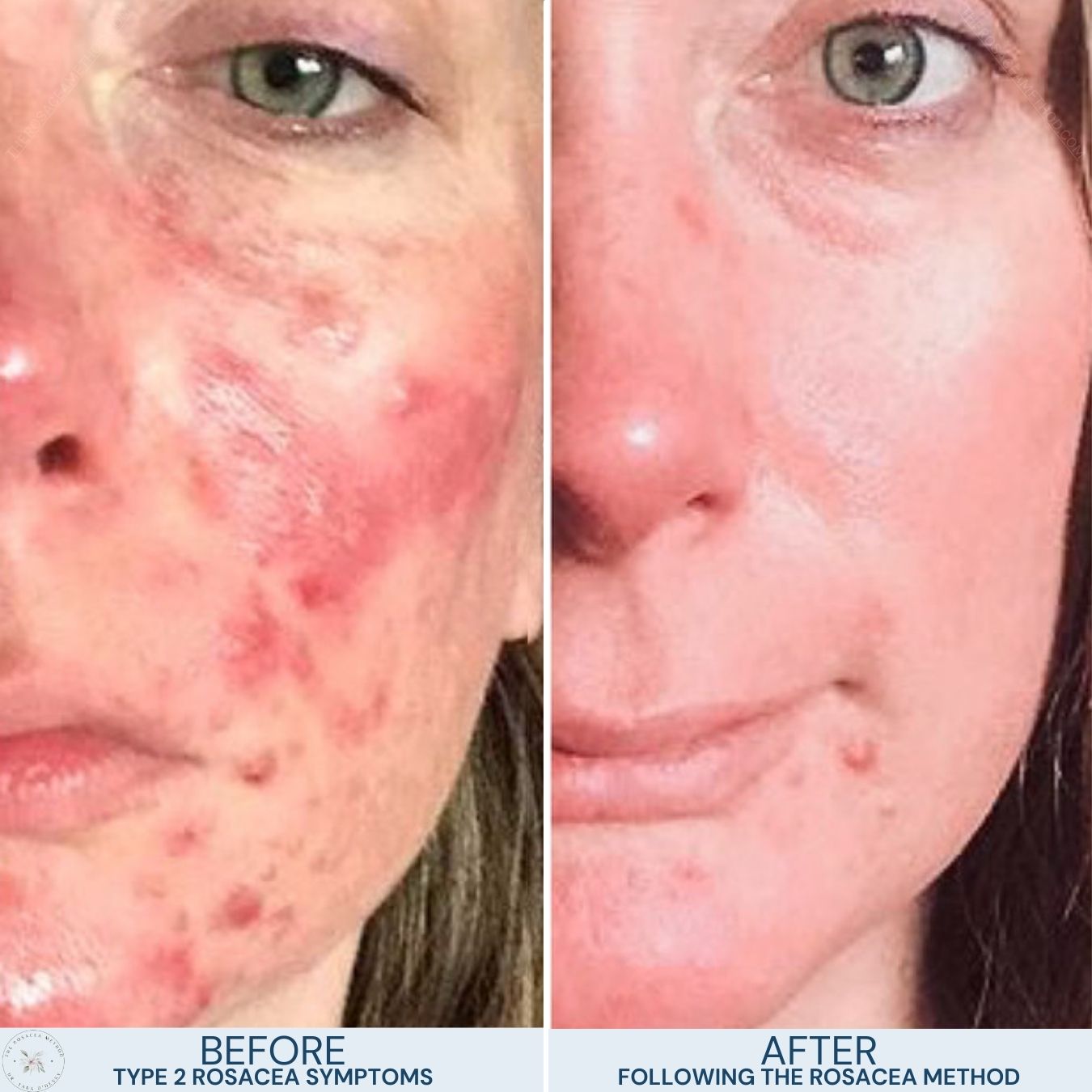
Tackling acne flare-ups doesn’t always require harsh chemicals. There are natural alternatives that many people find just as effective without the worry of antibiotic resistance.
- Tea Tree Oil: A potent antimicrobial, it targets acne-causing bacteria. Use sparingly to avoid skin sensitivity.
- Aloe Vera: Its soothing properties reduce acne inflammation and redness, making it a gentle yet effective treatment.
- Witch Hazel: This natural astringent controls oil, tightens pores, and eases inflammation, helping to prevent acne without fostering antibiotic resistance.
- Green Tea: Drinking green tea offers antioxidant benefits that combat inflammation and bacteria associated with acne.
- Honey: Manuka honey, in particular, offers antibacterial benefits, aiding in the healing of acne while soothing the skin.
These natural remedies can be a part of your skincare arsenal, offering a gentler approach to combating acne.
Papulopustular Rosacea vs Acne:
Finally, tell them apart and take back control of your skin!
Trying to tell the difference between Papulopustular Rosacea vs acne isn’t a burden you need to take on alone! Now that you know the difference, you can begin a healing journey.
Whether you’re dealing with rosacea or acne, by implementing targeted strategies, you can improve your skin health and say goodbye to persistent pimples on your cheeks!
Remember, taking care of your skin is a journey, but with the right knowledge and treatment, you can achieve clearer and healthier skin.
Dr. Tara O’Desky knows firsthand how difficult it can be to navigate rosacea alone; that’s why she created a one-of-a-kind holistic approach to healing rosacea that can help you learn what’s really causing your Type 2 Papulopustular Rosacea and begin the process of healing.
So, keep smiling, and let’s get your confidence back!
Embrace a Healthier You – Inside and Out. Start The Rosacea Method Now!

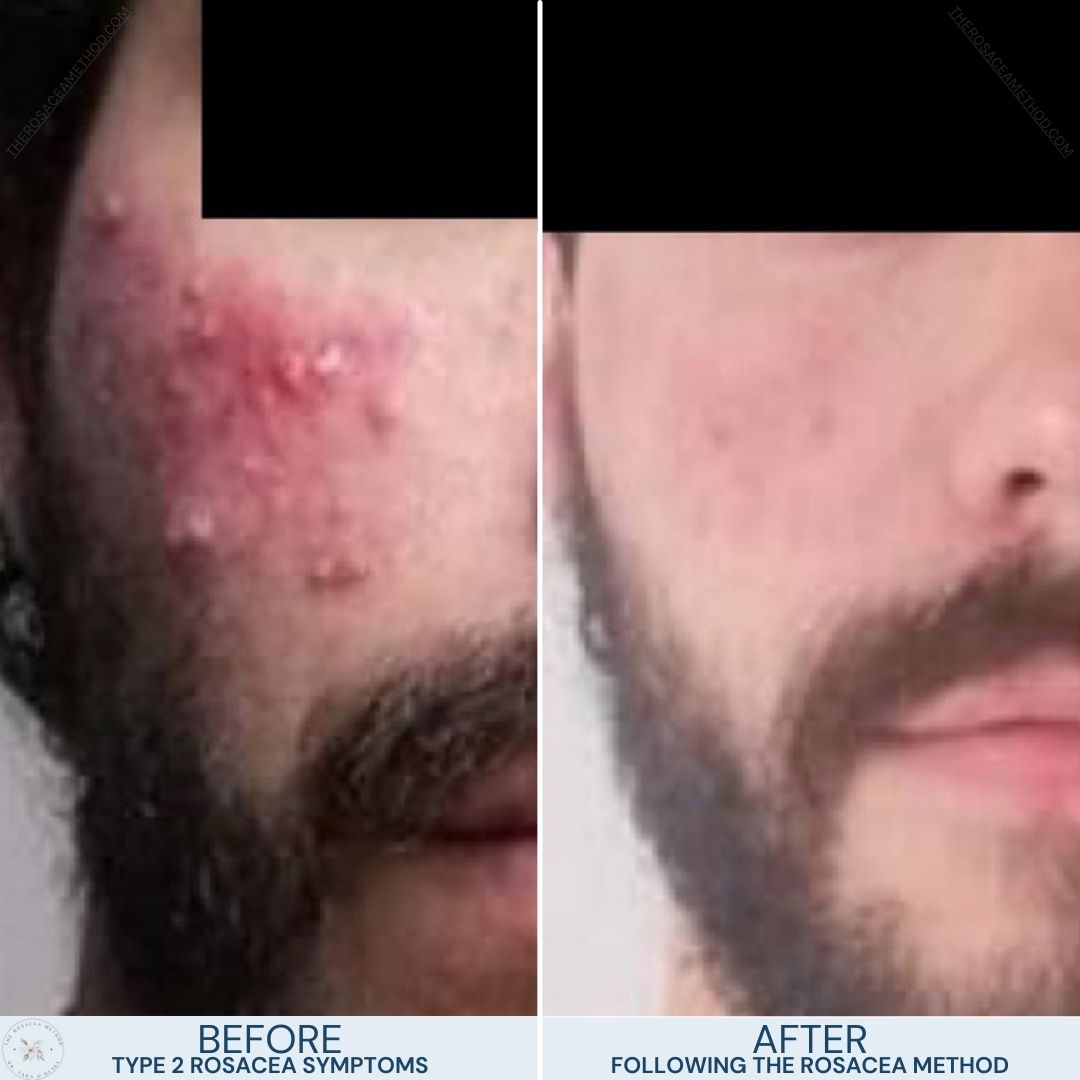
FAQs for Papulopustular Rosacea vs Acne
Q: What is Type 2 Papulopustular Rosacea, and how does it differ from acne flare-ups?
A: Type 2 Papulopustular Rosacea is a chronic skin condition characterized by facial redness and acne-like bumps, while Acne Flare-Ups are typically associated with clogged pores and inflammation.
Q: What are the common triggers for Type 2 Papulopustular Rosacea?
A: Triggers for Type 2 Papulopustular Rosacea include allergens, spicy foods, hot beverages, alcohol, and exposure to sunlight.
Q: How can one differentiate between Type 2 Papulopustular Rosacea and Acne?
A: Type 2 Papulopustular Rosacea often presents with facial flushing and visible blood vessels, whereas Acne flare-ups primarily involve blackheads, whiteheads, and pimples.
Q: Are there any specific treatments available for managing Type 2 Papulopustular Rosacea?
A: Yes, dermatology treatments for Type 2 Papulopustular Rosacea may include topical medications like metronidazole or azelaic acid or oral antibiotics like doxycycline. Natural treatment options include dietary and lifestyle modifications, demodex mite treatment, and stress management.
Q: Can certain skincare products worsen symptoms of Type 2 Papulopustular Rosacea?
A: Yes, products containing harsh chemicals, fragrances, colors, petrochemicals, or alcohol can exacerbate symptoms of Type 2 Papulopustular Rosacea.
Q: Is Type 2 Papulopustular Rosacea a curable condition?
A: Type 2 Papulopustular Rosacea is a chronic condition without a known cure, but symptoms can be managed with appropriate treatments and lifestyle changes. Recently, more and more people are finding ways to reverse their rosacea by addressing gut health, liver toxicity, environmental factors, and emotions.
Q: What role does diet play in managing Type 2 Papulopustular Rosacea?
A: Certain foods like spicy foods, hot beverages, and alcohol can trigger flare-ups in individuals with Type 2 Papulopustular Rosacea, so avoiding these triggers may help in managing the condition.
References:
- Zhou M, Xie H, Cheng L, Li J. Clinical characteristics and epidermal barrier function of papulopustular rosacea: A comparison study with acne vulgaris. Pak J Med Sci. 2016 Nov-Dec;32(6):1344-1348. doi: 10.12669/pjms.326.11236. PMID: 28083023; PMCID: PMC5216279. ↩︎
- Farshchian M, Daveluy S. Rosacea. [Updated 2023 Aug 8]. In: StatPearls [Internet]. Treasure Island (FL): StatPearls Publishing; 2024 Jan-. Available from: https://www.ncbi.nlm.nih.gov/books/NBK557574/ ↩︎
- National Institute of Arthritis and Musculoskeletal and Skin Diseases (NIAMS). “Rosacea.” Reviewed May 2021. Available at: NIAMS Rosacea ↩︎
- Picardo M, Eichenfield LF, Tan J. Acne and Rosacea. Dermatol Ther (Heidelb). 2017 Jan;7(Suppl 1):43-52. doi: 10.1007/s13555-016-0168-8. Epub 2017 Feb 1. PMID: 28150107; PMCID: PMC5289119. ↩︎
- Rivero AL, Whitfeld M. An update on the treatment of rosacea. Aust Prescr. 2018 Feb;41(1):20-24. doi: 10.18773/austprescr.2018.004. Epub 2018 Feb 1. PMID: 29507456; PMCID: PMC5828925. ↩︎
- Ebbelaar CCF, Venema AW, Van Dijk MR. Topical Ivermectin in the Treatment of Papulopustular Rosacea: A Systematic Review of Evidence and Clinical Guideline Recommendations. Dermatol Ther (Heidelb). 2018 Sep;8(3):379-387. doi: 10.1007/s13555-018-0249-y. Epub 2018 Jun 25. PMID: 29943217; PMCID: PMC6109029. ↩︎
MEDICAL DISCLAIMER
This content is for informational and educational purposes only. It is not intended to provide medical advice or to take the place of such advice or treatment from a personal physician. All readers/viewers of this content are advised to consult their doctors or qualified health professionals regarding specific health questions. Neither Dr. Tara O’Desky nor the publisher of this content takes responsibility for possible health consequences of any person or persons reading or following the information in this educational content. All viewers of this content, especially those taking prescription or over-the-counter medications, should consult their physicians before beginning any nutrition, supplement or lifestyle program.
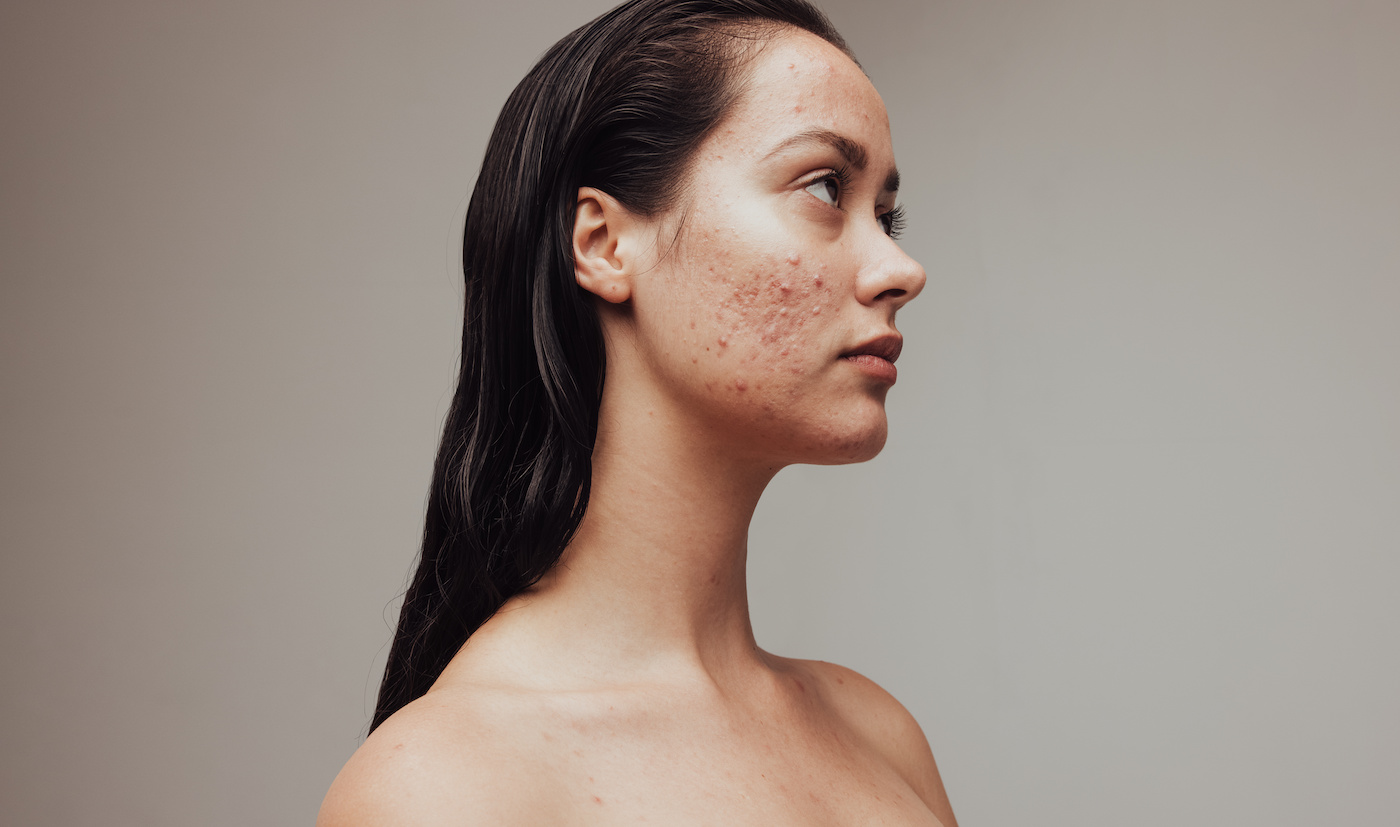
Leave a Reply
Learn More About Me
20 years of rosacea
- rosacea
- chronic skin issues
- gut issues
- food sensitivities
- inflammatory conditions
After 20 years of ineffective treatments and medications, Dr. O'Desky reversed her rosacea 100% through dietary changes and food-based medicine.
Health Coach & Holistic Skin Expert
Meet
Dr. Tara O'Desky
Since developing her own holistic healing program,
The Rosacea Method, she has helped countless patients of all ages with:
- rosacea
- chronic skin issues
- gut health
- food sensitivities
- inflammatory conditions
Dr. O'Desky continues to see patients in private practice in the USA and also sees clients via Telehealth. She currently offers various programs and workshops for people all over the world dealing with chronic health issues, poor gut health, and rosacea.
Health Coach and Holistic Skin Expert
Meet Dr. Tara O'Desky
-L. M.
"I want to say thank you so much for the program!
I never feel hungry anymore. My diet has opened up a ton and I feel really healthy and excited learning that there’s so many things I can eat now that are healthy and tasty. I felt good through the entire cleanse and my skin has definitely improved."
-Anonymous
"I felt so hopeless and I could not see light at the end of the tunnel. Now I have hope again and I feel more positive about my situation overall! Yes it can definitely heal, I have so so sure others heal! This program is great, I feel like It covers everything! Thank you! "
-Darlene B
"For the first time in 6 years, I feel like I have been given a clear direction to go in that will actually heal my skin. There's so much guess work that comes along with skin complications and Tara helps to clear all that up.Recommend 1000%."
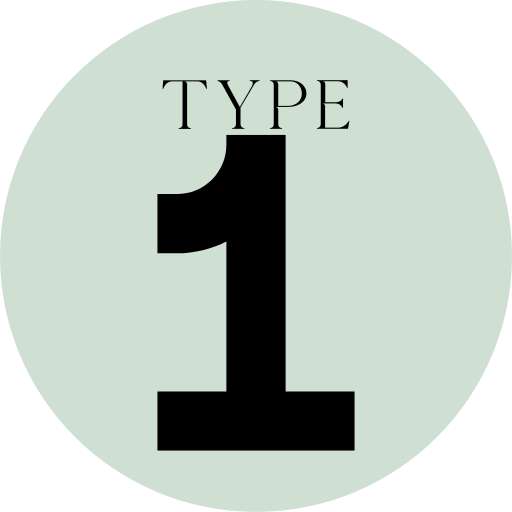
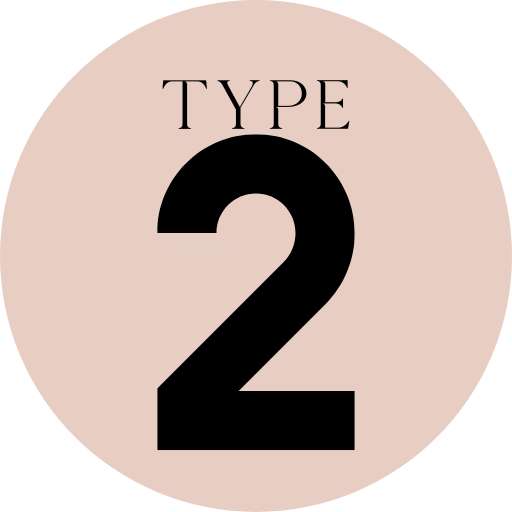 Type 2: Papulopustular Rosacea
Type 2: Papulopustular Rosacea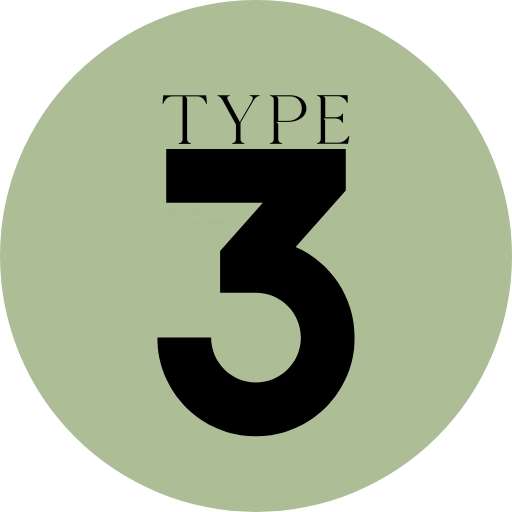
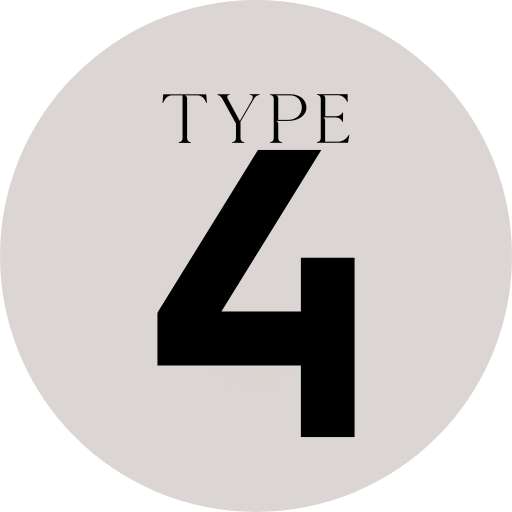
“Say goodbye to harsh exfoliants, masks, and scrubs. Less is more!” Such good info since so many times with acne we want to try so many more things and that’s not always what we need.
So true! We assume a miracle product will help us heal, when in fact it’s internal!
I’ve had rosacea for about 5 years now (wow) and I’ve spent the latter part of my 20s hiding and hating my skin. I’ve known it was rosacea for years, but was officially diagnosed last year. I paid thousands to work with a naturopathic doctor who didn’t think I had rosacea and made me do allll these tests….for nothing. I’m really hoping The Rosacea Method is the thing that finally finally helps!
Oh it will! So many people say the same thing, and it actually works!
I would love to find an exfoliant that isn’t harmful to rosacea-burdened skin! If anyone knows of anything, let me know!
Yes! You have to be so careful with exfoliants! We talk about natural alternatives in my program The Rosacea Method.
Thank you for this detailed article. It gets a bit confusing after so many YT videos and people saying what worked for them, although there are common triggers and possible solutions it is quite a lot to take in. Way to many products also. Hope I can find a routine that works for me soon. What do you think about spf?
I’m not a fan of SPF! Usually makes your skin much more irritated! A sunhat works just fine. 😉
best info out there!
So glad you’re finding it helpful!
Great read! I have type one rosacea and am planning on joining the rosacea method.
Can’t wait to welcome you to the program!
None of the dermatologists i went (even if i said maybe i should cut gluten, sugar, dairy) said there is any relation between my rosacea and gut/liver system.. on the contrary they just said it is a skin condition, and kept in prescribing me antibiotics.. makes me feel so sad to see all thise doctors looking into this matter from one angle while it is actually so multi dimensional.. thanks Tara for all these extremely valuable information🙏🏼
You’re so welcome! And there’s SO much research on the gut skin connection! Glad to help.
Thank you so much for all your information! I live in the Netherlands and am thinking about following your program. Strongly believe you can heal your skin from within. Do you think it’s possible to participate your program from another country? Or do you for example talk a lot about products etc only available in USA?
I’d say at least half our members are from other countries! The program was designed to help people all over the world, and I share necessary ingredients of the food based supplements so that you can source them locally. Hope to see you there soon!
Interesting to read rosacea can make your pours more visible, mine have certainly become more visible over the last year or two. Also I think I do suffer from acne from time to time so good to read about treatments for this too!
Yes, a telltale sign up rosacea is enlarged pores! Glad you’re learning more about this condition!
I am about to unlock Module 2 of The Rosacea Method. I am learning so much and feel affirmed in what I believed to be contributing to my rosacea. I have been gluten free for over a year now and while I have seen some benefit, I definitely have further to go. Thank you for providing a protocol that removes the guesswork.
So happy you’re finding our program helpful! Keep us posted on your progress!
This is so so helpful, thank you! 🙌
My absolute pleasure!
Great insights !
So glad you found it helpful!
Thank you
My pleasure!
I’m thankful I came across your Instagram for all the helpful information and the real facts.
I’m so glad you found me!
It’s really ridiculous that all the dermatologists say the same thing no sun, no spicy foods and yet my type 2 rosacea was mistaken for acne for years. I saw three different specialists, but it was finally me who figured out it was rosacea. After that, they confirmed the diagnosis and prescribed Ivermectin as an antibiotic.
I’m so sorry you went through this! it’s actually way too common!
“New” to rosacea, tired of mixed concepts, antibiotics, and dermatologists! Need help trying to find my rosacea triggers!
This blog like so many of your others are so helpful! My skin used to be just red and very sensitive but it has definitely become worse over the last eight years. Very bumpy and red. Orange peel as described in another post you have done. Tried everything topical and now I realized I need to work on things on the inside to fully heal. I hope to learn more on how to do that and have clear skin like you!!
There’s so much you can do… so don’t give up!
Thanks for the article. This is very helpful. I am interested in trying ivermectin. Would most dermatologists be able to prescribe it? And in your opinion, how long should someone use it before it causes long term effects, if any? Thanks!
Ivermectin is the typical pharma option, however there are many great natural alternatives! And remember, once you heal internally, you won’t need a topical cream!
Dr Taras blogs are always so insightful.
I remember when I saved up to go to a dermatologist appointment whilst living in London and was so excited because I honestly thought they’d be able to help. They identified it as acne/rosecca and gave me cremes – that was it. No clarity about why my skin after years of never getting spots had suddenly broken out. I knew it was something deeper than just developing skin issues like acne because it just didnt fit or feel right, but they showed me to the door with my prescription and i remember feeling deflated after.
Since then I have followed Dr Tara on instagram and read her blogs, and I have learnt more from following her than I would ever have with that dermatologist.
Grateful to her dedication to changing the narrative on Rosecca
Thank you so much for your thoughtful feedback! I will continue to post as long as it’s helpful to others!
This is amazing .Thank you so much Doctor. So detailed and helpful not many people are willing to out do much free information out there . You really do want to help people and that’s just amazing!
I was shocked at how little information was out there… and it became my mission!
Once you do the program can you have some of the things that were once a trigger ? Like a glass of wine or hot beverage
Yes, absolutely!